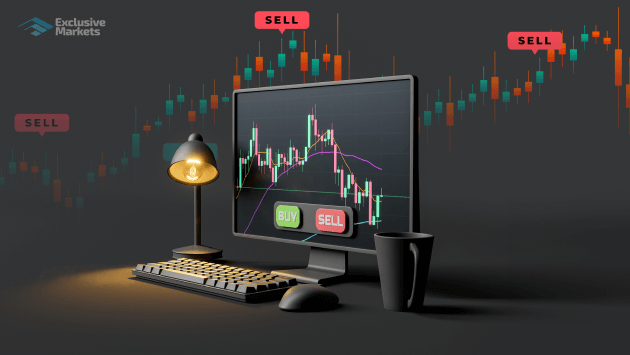Forex Trading Online A Comprehensive Guide for Beginners 1960530594

Forex Trading Online: A Comprehensive Guide for Beginners
Forex trading online has revolutionized how individual investors and traders approach the currency markets. Gone are the days where trading was restricted to large financial institutions and brokers. Today, with advancements in technology, anyone can participate in the Forex market from the comfort of their own home. In this guide, we will delve into the basics of Forex trading, explore various strategies, and provide essential tips for those looking to enter the world of Forex trading. If you are eager to learn more, consider visiting forex trading online exbroker-turkiye.com for additional resources.
What is Forex Trading?
Forex trading, or foreign exchange trading, involves the buying and selling of currencies with the aim of making a profit. The Forex market is the largest financial market in the world, with a daily trading volume exceeding $6 trillion. Unlike stock markets, which are open during specific hours, the Forex market operates 24 hours a day, five days a week, providing endless opportunities for traders.
How Forex Trading Works
Traders speculate on the price movements between currency pairs, such as EUR/USD (Euro/US Dollar) or GBP/JPY (British Pound/Japanese Yen). Each currency pair has a bid price and an ask price. The bid price is the rate at which the trader can sell the currency pair, while the ask price is the rate at which they can buy the currency pair. The difference between these two prices is known as the spread.
Getting Started with Forex Trading
Before jumping into Forex trading, it’s crucial to follow several steps to ensure that you’re adequately prepared. Here’s a brief overview of what you need to do to start trading.
1. Educate Yourself
The first step in Forex trading is to educate yourself about the market and its mechanisms. There are numerous resources available, including books, webinars, online courses, and forums where traders share their experiences. Knowledge is power in Forex, and understanding fundamental and technical analysis will give you an edge.
2. Choose a Reliable Broker
Selecting the right Forex broker is critical to your trading success. Look for brokers that are regulated by reputable financial authorities, have a user-friendly trading platform, competitive spreads, and strong customer service. Checking reviews and conducting thorough research can help you make an informed decision.
3. Create a Trading Plan
Establishing a well-defined trading plan is essential. This plan should outline your trading goals, risk tolerance, and specific strategies you intend to use. A solid trading plan helps maintain discipline and prevents emotional decisions during trading sessions.
4. Practice with a Demo Account
Most brokers offer demo accounts that simulate real trading environments. These accounts allow you to practice trading without risking real money, providing an excellent opportunity to hone your strategies and become familiar with the trading platform.
Understanding Forex Analysis
Forex trading involves two main types of analysis to inform trading decisions: fundamental analysis and technical analysis.
Fundamental Analysis
Fundamental analysis involves evaluating the economic indicators, news, and events that can impact currency values. Key indicators include interest rates, inflation rates, employment figures, and geopolitical developments. Understanding how these factors influence currencies will help you make better trading decisions.

Technical Analysis
Technical analysis focuses on price movement and historical data. Traders use charts and technical indicators to identify trends and patterns. Popular tools include moving averages, Relative Strength Index (RSI), and Fibonacci retracements. Technical analysis is crucial for determining entry and exit points in trading.
Forex Trading Strategies
There are several trading strategies that traders use in Forex trading. Here are some popular ones:
1. Scalping
Scalping is a high-frequency trading strategy that involves making numerous trades within short timeframes to capture small price movements. Scalpers aim to profit from tiny fluctuations in the market and often hold positions for just a few seconds or minutes.
2. Day Trading
Day trading involves opening and closing trades within the same day. Day traders aim to capitalize on intraday price movements and avoid holding positions overnight to mitigate the risk of market fluctuations during off-hours.
3. Swing Trading
Swing traders hold positions for several days to capture price movements resulting from market swings. This strategy relies on technical analysis and is less demanding than day trading, making it suitable for those who cannot monitor the market constantly.
Risk Management in Forex Trading
Risk management is a vital aspect of successful Forex trading. Here are some tips to manage risks effectively:
1. Use Stop-Loss Orders
Implementing stop-loss orders helps limit potential losses by automatically closing a trade when a specific price level is reached. This strategy is essential to protect your capital and manage risk effectively.
2. Manage Your Leverage
Leverage allows traders to control larger positions with a smaller amount of capital. However, while it can amplify profits, it also increases the risk of substantial losses. Use leverage cautiously and only when you fully understand its implications.
3. Diversify Your Portfolio
Do not put all your capital into a single trade or currency pair. Diversifying your portfolio across various assets can help reduce risk and provide more stable returns.
Conclusion
Forex trading online offers exciting opportunities for profit, but it also comes with significant risks. By educating yourself and developing a solid trading plan, you can navigate the complexities of the Forex market effectively. Remember to practice discipline, manage your risks, and continuously seek to improve your skills. Good luck on your Forex trading journey!


